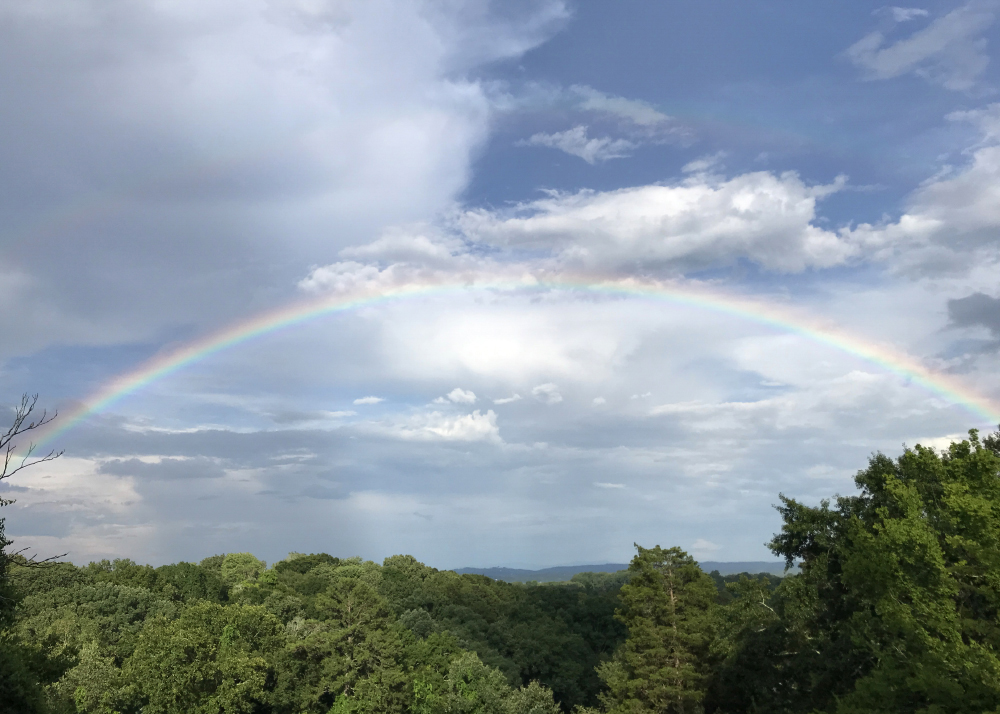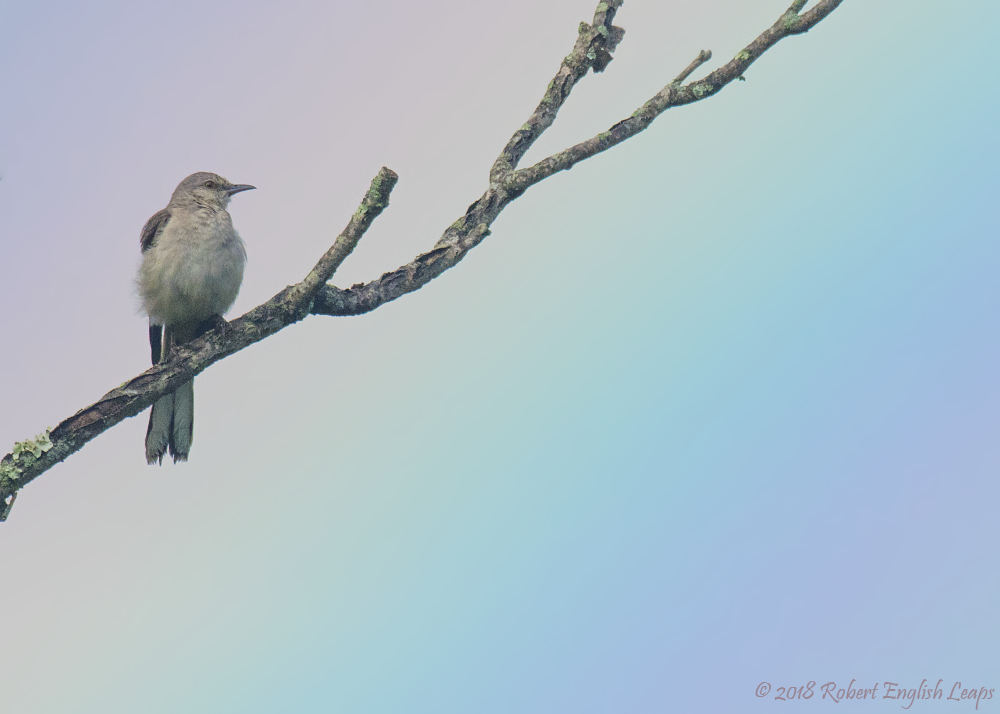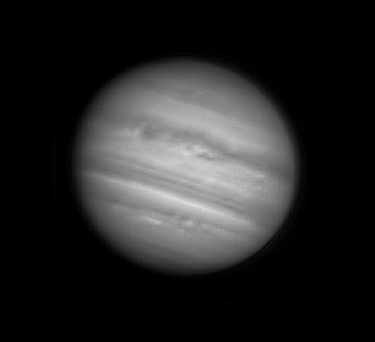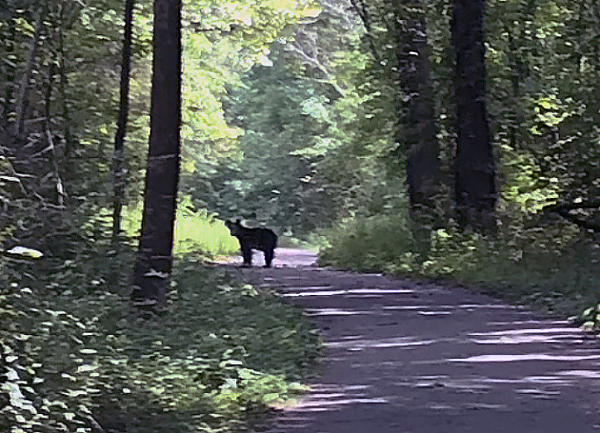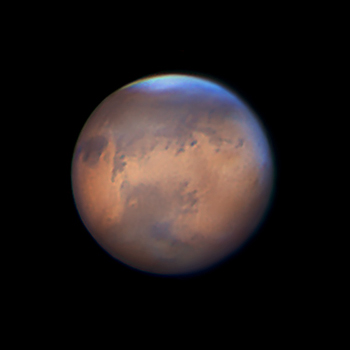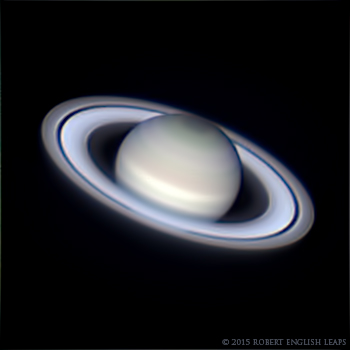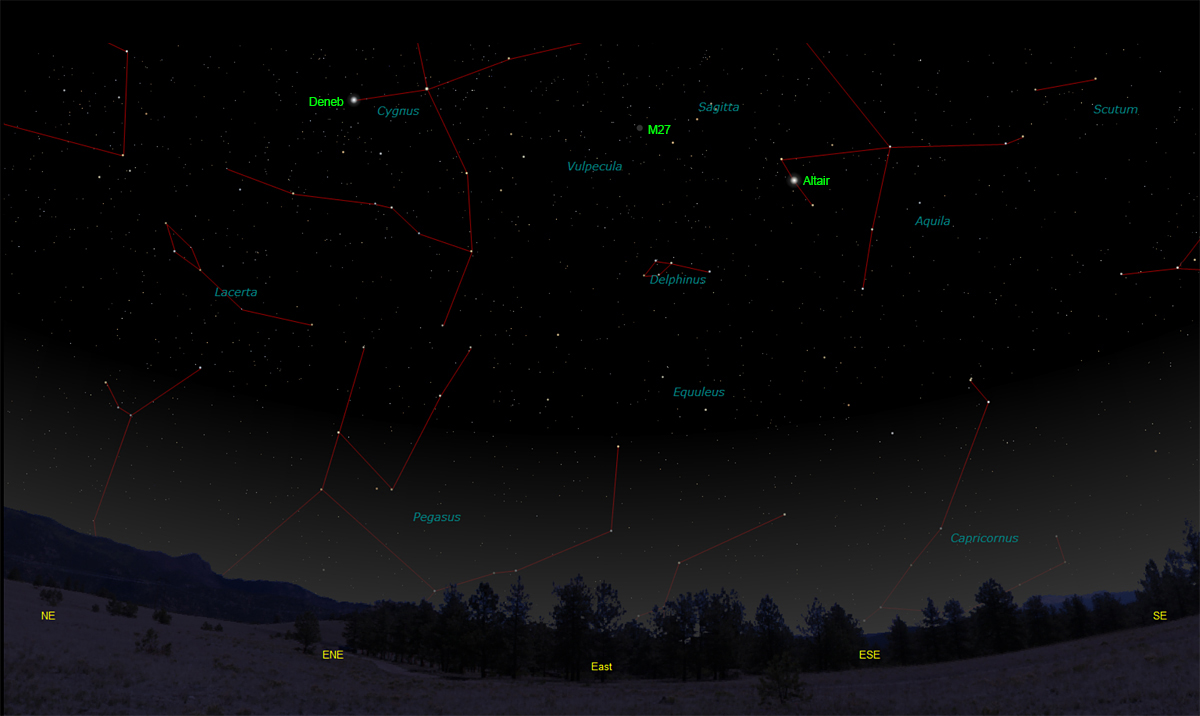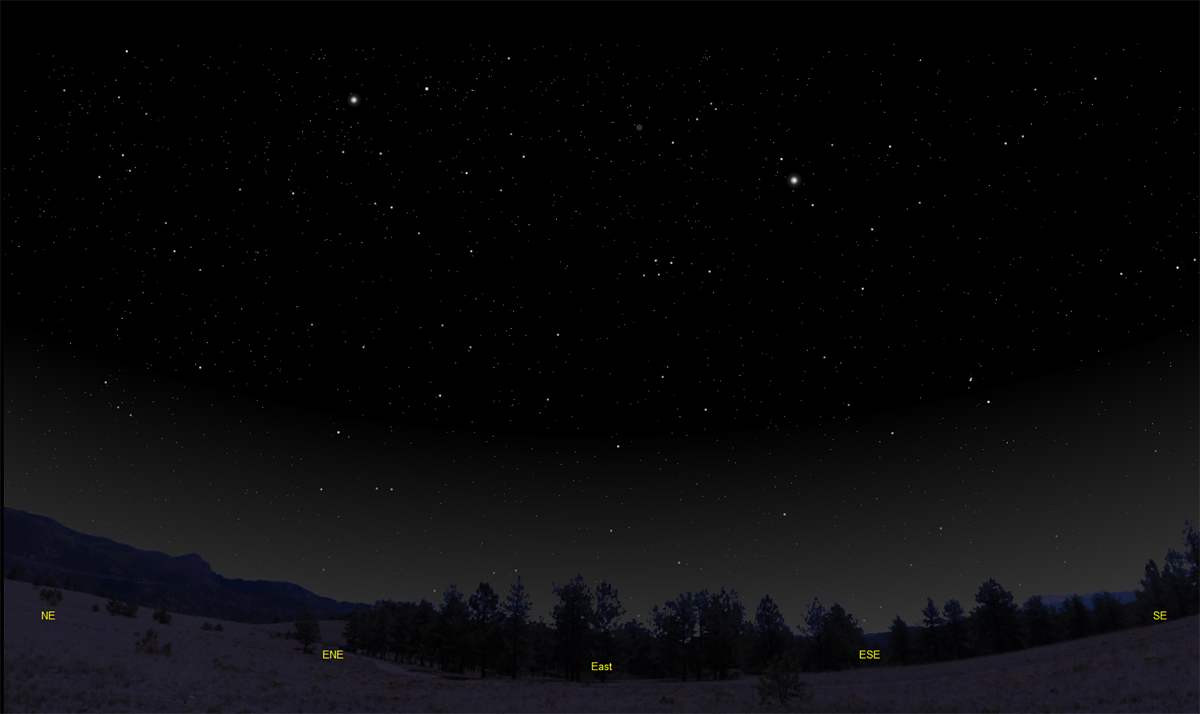The purpose of this feature is to give scout leaders, educators and naturalists an idea of some of the natural events coming up each month. We will try to cover a variety of natural events ranging from sky events to calling periods of amphibians, bird and mammal watching tips, prominent wildflowers and anything else that comes to mind. We will also note prominent constellations appearing over the eastern horizon at mid-evening each month for our area for those who would like to learn the constellations. If you have suggestions for other types of natural information you would like to see added to this calendar, let us know! Note: You can click on the hyperlinks to learn more about some of the featured items. To return to the Calendar, hit the "back" button on your browser, NOT the "back" button on the web page. All charts are available in a "printer friendly" mode, with black stars on a white background. Left clicking on each chart will take you to a printable black and white image. Please note that images on these pages are meant to be displayed at 100%. If your browser zooms into a higher magnification than that, the images may lose quality. Though we link book references to nationwide sources, we encourage you to support your local book store whenever possible.
Notes and Images From June and July 2018
We had this pretty double rainbow on July 1st. Summer is a great time to see rainbows, and you'll see more if you get in the habit of looking in the opposite direction of the Sun after a thunderstorm has passed. If you look closely above, you'll see that the fainter secondary bow (above the brighter primary bow) has the order of the colors reversed. This and other odds and ends about rainbows are discussed in a Nature Notes column I did way back in 2002. You can find it here. If you look closely at the top image you can see a bird sitting on the bare branches of a tree at the left hand side of the image. The bottom image is a closeup of that bird taken with a long lens. It's a Northern Mockingbird, still somewhat wet from the storm. The colors of the rainbow shade the sky beyond.
I use a monochrome video camera for planetary photography. It's a fairly complicated process. You must take a short several-minute video through the telescope through a red filter, then again through a green filter and finally again through a blue filter. Computer software sifts through thousands of images from the videos and averages only the sharpest images from the videos to get one final image from each of the three videos. You must then combine the three filtered images to get a color image of the planet. On this particular night, my telescope drive had a bug that made tracking the planet difficult. I ended up getting only the red-filtered image shown at right. Still, it was fun getting the telescope back under a starry sky and imaging again.
The first thing that I noticed was its rather slow, ambling gait. It headed directly away, so I couldn't tell much. I tried to close the gap as much as I could before it turned around. An escaped exotic animal? I couldn't make any sense of it. All I had with me was my iPhone. Not exactly a telephoto lens, but I clicked away as I walked. Finally it stopped and turned sideways. A bear! That wasn't even on my radar! It was a yearling, rather skinny looking and with seemingly oversized ears. I got off a couple of shots before it saw me. It immediately bolted for the woods to the right in the image above. I looked as I walked by the woods that into which it disappeared, but could not spot anything in the rather thick undergrowth. What a day! I checked the Tennessee Wildlife Resources Agency's website and found that occasional sightings of bears are not that unusual in areas some distance from the Smokies. According to that site, out-of-place bear sightings peak around June and July, as males roam during the breeding season and younger bears try to establish their territories. There is a lot of information on black bears at the TWRA website, including range maps, what to do if you have a bear encounter and places to send information about bear sightings you may have. The following information is from the TWRA website cited above:
"Adult bears can be three feet tall at the shoulder and six feet in length. Black bears vary greatly in weight, depending on food availability and time of year. Weights range between 125 to 600 pounds for adults. Females are generally smaller. The back end of a black bear is normally taller than the front and black bears do not have a hump at the shoulder, like their cousin the grizzly bear. Black bears have average eyesight, fantastic hearing and an amazing sense of smell. Thought to be one of the best noses in the animal kingdom, their smell is 100 times greater than our own and seven times greater than a bloodhound. Although cumbersome looking, bears are great swimmers and capable of running at burst of 30 miles an hour. Black bear are very dexterous and strong. They have been seen unscrewing lids of jars and easily tearing open metal containers to reach food. Black bears are considered crepuscular animals. That is, they are most active at dawn and dusk; although they can be active any time in areas where humans are less common. Bears bed down on the hottest of days, in cooler safe locations. Healthy, normal bears avoid humans and areas around human dwellings."
Bear populations reached a low point during the latter part of the 20th century, and have been slowly recovering since the 1970's. As they expand outward from the Smokies into their historical range, don't be too surprised if you happen upon one.
Sky Events for July 2018: July is quite a month for planets - you can see all of the 9 (okay, 8 plus dwarf-planet Pluto) planets during the month with the proper equipment, though Pluto is always a challenge. Mars has its closest approach to Earth in 15 years. Saturn is quite beautful in any telescope. With binoculars, patience and a finder chart or app, you can spot Uranus and Neptune. Add to this the summer Milky Way and you have a lot to enjoy! Evening Sky: Jupiter is in Libra this month. Look for it high in the southern sky at dusk as the month begins. If you steady your binoculars on something solid, you can often pick out several of the four Galilean satellites of Jupiter close to the planet. With a telescope, you can often glimpse some details in the clouds. These details change rapidly, and the details can look different from night to night. It's also fun to watch the Galilean satellites transit the face of the planet, or be eclipsed by the planet's shadow.
Venus continues to dazzle in the western sky after sunset this month. It becomes visible before any other star or planet. Mercury continues to be visible in the darkening sky at dusk this month. Look for it at the beginning of the month low in the western sky about 30 to 40 minutes after sunset at the end of the month, below and to the right of bright Venus.
Saturn is in Sagittarius this month, rising about 7:25pm CDT at the beginning of the month. The tilt of the rings has now opened to 26 degrees, and the view is spectacular in any size telescope. The planet transits around 12:20am CDT. The globe of Saturn is now 18.4 seconds of an arc. Constellations: The views below show the sky looking east at 10:00pm CDT on July 15th. The first chart shows the sky with the constellation outlined and names depicted. Star and planet names are in green. Constellation names are in blue. The second view shows the same scene without labels. Prominent constellations this month in the eastern sky are Cygnus, the Swan, with its bright star Deneb, and Aquila, the Eagle, with its bright star Altair. Below and to the left of Altair is the constellation of Delphinus, the Dolphin, looking like it's leaping over the eastern horizon. Above Delphinus look for the arrow-like form of Sagitta, the Arrow. Between Sagitta and Cygnus lie the faint stars of Vulpecula the Fox. One of the brightest planetary nebula in the sky resides in this little constellation. Messier 27, can be seen as a fuzzy patch in binoculars (don't expect the bright colors - just a grayish green spot). Use the easy-to-find stars of nearby Sagitta to locate it, using the finder chart on the Messier 27 web page. On Learning the Constellations: Try learning a few constellations each month, and then following them through the seasons. Once you associate a particular constellation coming over the eastern horizon at a certain time of year, you may start thinking about it like an old friend, looking forward to its arrival each season. The stars in the evening scene above, for instance, will always be in the same place relative to the horizon at the same time and date each July. Of course, the planets do move slowly through the constellations, but with practice you will learn to identify them from their appearance. In particular, learn the brightest stars (like Deneb and Altair in the above scene), for they will guide you to the fainter stars. Once you can locate the more prominent constellations, you can "branch out" to other constellations around them. It may take you a little while to get a sense of scale, to translate what you see on the computer screen or what you see on the page of a book to what you see in the sky. Look for patterns, like the stars that make up the constellation Cygnus.The earth's rotation causes the constellations to appear to move across the sky just as the Sun and the moon appear to do. If you go outside earlier than the time shown on the charts, the constellations will be lower to the eastern horizon. If you observe later, they will have climbed higher. As each season progresses, the earth's motion around the sun causes the constellations to appear a little farther towards the west each night for any given time of night. If you want to see where the constellations in the above figures will be on August 15th at 10:00pm CDT, you can stay up till 12:00am CDT on July 15th and get a preview. The westward motion of the constellations is equivalent to two hours per month. Recommended: Sky & Telescope's Pocket Star Atlas is beautiful, compact star atlas. A good book to learn the constellations is Patterns in the Sky, by Hewitt-White. You may also want to check out at H. A. Rey's classic, The Stars, A New Way to See Them. For skywatching tips, an inexpensive good guide is Secrets of Stargazing, by Becky Ramotowski.
A good general reference book on astronomy is the Peterson
Field Guide,
A Field Guide to the Stars and Planets, by Pasachoff. The book retails for around $14.00.
The Virtual Moon Atlas is a terrific way to learn the surface features of the Moon. And it's free software. You can download the Virtual Moon Atlas here. Apps: We really love the Sky Safari 6 Pro. It is available for both iOS and Android operating systems. There are three versions. The Pro is simply the best astronomy app we've ever seen. The description of the Pro version reads, "includes over 100 million stars, 3 million galaxies down to 18th magnitude, and 750,000 solar system objects; including every comet and asteroid ever discovered." A nother great app is the Photographer's Ephemeris. Great for finding sunrise, moonrise, sunset and moonset times and the precise place on the horizon that the event will occur. Invaluable not only for planning photographs, but also nice to plan an outing to watch the full moon rise. Available for both androids and iOS.
Amphibians:
Recommended: The Frogs and Toads of North America, Lang Elliott, Houghton Mifflin Co.
Archives (Remember to use the back button on your browser, NOT the back button on the web page!)
Natural Calendar February 2016 Natural Calendar December 2015 Natural Calendar November 2015 Natural Calendar November 2014 Natural Calendar September 2014 Natural Calendar September 2013 Natural Calendar December 2012 Natural Calendar November 2012 Natural Calendar September 2012 Natural Calendar February 2012 Natural Calendar December 2011 Natural Calendar November 2011 Natural Calendar September 2011 Natural Calendar December 2010 Natural Calendar November 2010 Natural Calendar September 2010 Natural Calendar February 2010 Natural Calendar December 2009 Natural Calendar November 2009 Natural Calendar September 2009 Natural Calendar February 2009 Natural Calendar December 2008 Natural Calendar November 2008 Natural Calendar September 2008 Natural Calendar February 2008 Natural Calendar December 2007 Natural Calendar November 2007 Natural Calendar September 2007 Natural Calendar February 2007 Natural Calendar December 2006 Natural Calendar November 2006 Natural Calendar September 2006 Natural Calendar February 2006
Natural Calendar December 2005
Natural Calendar November 2005
Natural Calendar September 2005
Natural Calendar February 2005
Natural Calendar December 2004
Natural Calendar November 2004
Natural Calendar September 2004
Natural Calendar February 2004
Natural Calendar December 2003
Natural Calendar November 2003 Natural Calendar February 2003 Natural Calendar December 2002 Natural Calendar November 2002 Nature Notes Archives: Nature Notes was a page we published in 2001 and 2002 containing our observations about everything from the northern lights display of November 2001 to frog and salamander egg masses. Night scenes prepared with The Sky Professional from Software Bisque All images and recordings © 2018 Leaps
|
|
